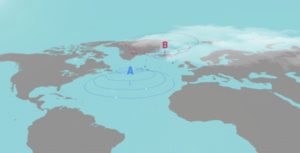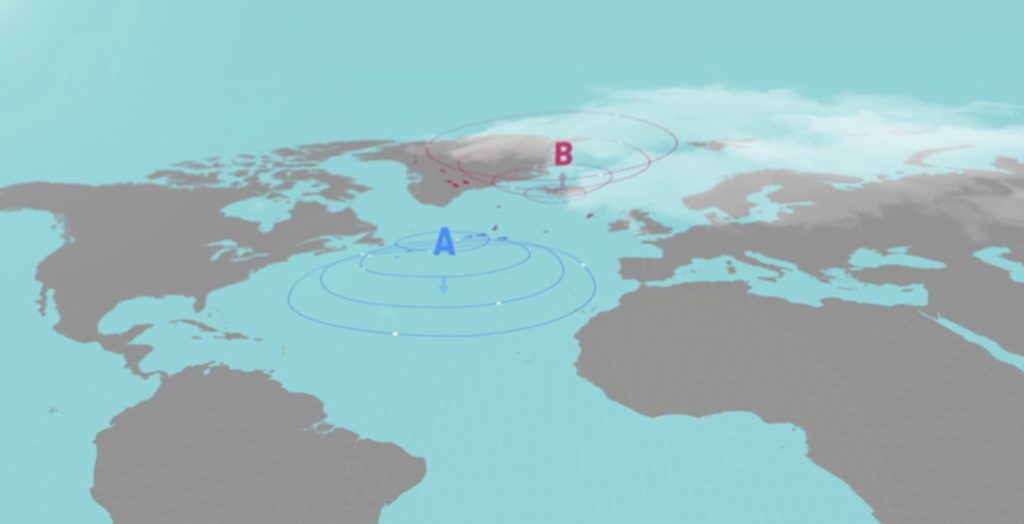Anticyclones or high pressure centers are found between the subtropical and mild areas of the planet. The Azores anticyclone usually spreads throughout the North Atlantic and focuses on the so-called archipelago. It affects the Canary Islands significantly during almost all the year, though it withdraws occasionally between autumn and spring. In winter it is more inconstant and moves from north to south depending on the Atlantic depression. In cases of high pressure all over the ocean, it usually moves to the north of the islands, and the other way round in summer. However, its predominance is extremely high, as more than a week without showing up is rare.

When the winter approaches, so does the anticyclone, which may be placed on the islands or close to them; this causes the trade wind regime to decrease and disappear.
The intensity of the trade winds varies in relation to the shift of the Azores anticyclone throughout the year. When the distance between the center of the anticyclone and the Canary Islands is shortened, the pressure gradient usually increases (isobars together), so the intensity of the trade winds also increases considerably.
In winter the situation is more changeable more than in summer. The center of the anticyclone often moves to the north and away from the Canary Islands, thereby leaving the islands to the south of high pressures. In this case, a wind regime with East to Southeast component appears weakening the action of the trade winds, reducing cloudiness and even dragging suspended dust particles from the Sahara. This is due to the fact that the air mass is less humid because of the African influence and the short distance traveled in contact with the sea.
On the other hand, the winds are more intermittent in direction and intensity due to the anticyclone oscillation. In summer, the anticyclone moves to the northwest of the Canary Islands, in the Azores, generating more intense trade winds and giving rise to the sea of clouds, formed by the characteristic stratocumulus, which are so common in the northern slopes of the Archipelago.
When the anticyclone withdraws, so does the daily inversion layer, enabling flights at higher altitude. The situation is more unstable and development clouds may appear at noon but the sea of clouds disappears, so such conditions are better for Cross Country flights.
The Azores anticyclone determines the direction of the wind in the Islands by creating a constant northern airflow following the course of the isobars. It is the trade wind regime blowing across the Atlantic Ocean towards the Caribbean Sea. We can say that trade winds are born in the Canary Islands, they are the wind of the Canary Islands.

